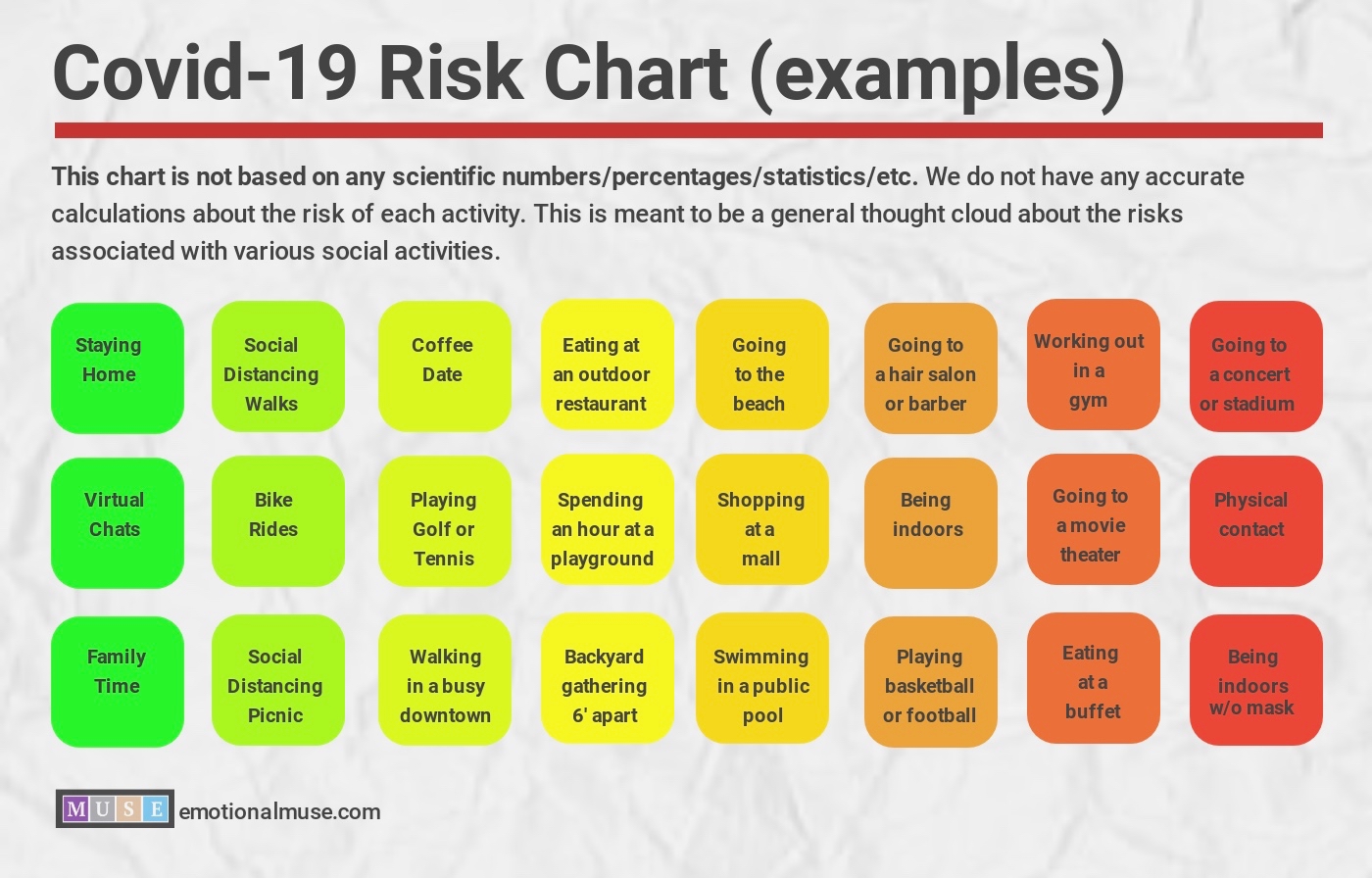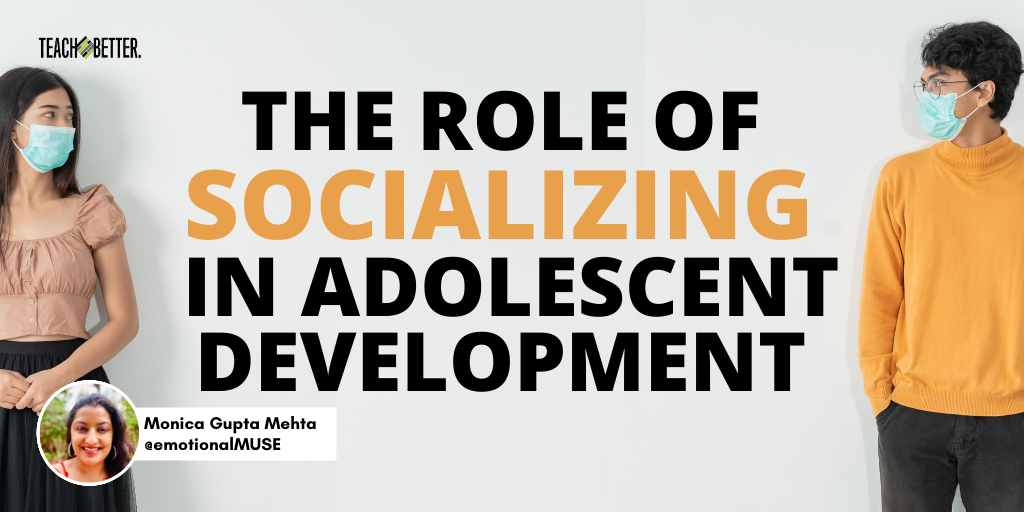TL;DR:
- Socializing is an important factor in adolescent development.
- Emotional health impacts one’s physical health.
- Technology has both positive and negative uses, so be mindful of how your students are utilizing it.
- It’s important for everyone to still socialize in a variety of ways, as long as staying safe is a priority.
- “Both/And” Thinking is a more positive perspective than “Either/Or” thoughts.
Let me preface this entire article by saying that I take being in a pandemic very seriously. We conscientiously follow all of the recommended safety guidelines in our household (and even some lesser-known ones, like closing the toilet bowl lid before flushing). I am not recommending that we allow teenagers to attend a concert or go to parties.
However, I am suggesting that teenagers should prioritize seeing friends as much as their family’s risk tolerance allows, and that digital socialization is simply not enough for the proper development of adolescent social skills.
Parents and teachers, it is our job to motivate and educate our children/students to learn about and grow in these important social and emotional learning (SEL) skills. The SEL site EmotionalMUSE has a learning unit for secondary grade levels entitled “Socializing During a Pandemic” which is about exactly that.
Teenagers are especially sensitive to the social challenges of COVID-19.
Teenagers are going through an explosion of developmental changes (biological, social, and psychological), which is what might make them especially sensitive to the social challenges of COVID-19. This is the time when teenagers are meant to rely more heavily on their peers and to develop independence from parents; it is a time for exploring questions of identity, heightened sensation seeking, and the beginning of forming romantic relationships.
Not being able to socialize properly has been potentially weakening the mental and emotional health of adolescents across the country. It is important to also note that poor emotional health weakens the body’s immune system. Humans are more likely to get colds and infections when stressed, anxious, or upset. The research in this area is still new, and not fully understood, but it is generally agreed upon by scientists that there exists a connection between emotional health and the immune system.
Parents and teachers, it is our job to motivate and educate our children/students to learn about and grow in these important social and emotional learning (SEL) skills. Click To TweetPoor emotional health impacts physical health.
Poor emotional health has an additional impact on physical health; when feeling anxious, depressed, and stressed, humans are less likely to take proper care of our bodies. Some people might feel less like exercising, eating healthy foods, or taking their medication. Some might sleep too much or too little. Others turn to alcohol, drugs, and/or tobacco to cope with their feelings.
Parents often worry over how much time their children are spending on social media. But the truth is, digital connection has been a lifesaver during this pandemic—sometimes literally. Social media may be especially helpful for teens to connect with their peers while complying with social distance mandates. However, social media can also negatively impact teen mental and physical health. It’s not clear that the problem is how much time teens spend on social media; the problem appears to be more what types of social media teens engage in.
Beneficial and harmful uses of technology.
Some beneficial uses for technology include:
- Accessing information and resources about COVID-19. (Many teens engage in risk-taking behaviors; having access to this information, as well as personal stories of those impacted by COVID-19, can help them make safe choices.)
- Staying connected to friends and family.
- Identity exploration.
- Creative expression.
- Seeking out supportive communities and resources, especially for those in unsafe environments.
The best forms for staying in touch digitally include video conferencing and texting because those provide a more authentic, interpersonal connection.
Some harmful uses for technology include:
- Fake news/misinformation.
- Self-presentation/body image. This may be worsened by the lack of seeing peers in person. Digital representations often include filters and editing tools, which can negatively impact people’s perception of their own relative appearance.
- Negative comparisons about lifestyles, accomplishments, and material possessions, which can create anxiety and mood disorder issues.
- Overwhelming oneself with information about the pandemic.
- Evening screen time causing sleep/circadian rhythm disruptions.
As useful as technology can be at keeping us in touch with the outside world, there are many parts of normal development that cannot happen properly without in-person social skill-building. Another observation is that after a period of quarantine, when people are allowed to socialize again, some people have been too quick to go in the exact opposite direction…participating in large gatherings, not social distancing properly, and returning to normal activities without adequate safeguards in place.
This is creating a yo-yo effect on socialization—from none, to too much, back to none again. I recommend finding ways to continue socializing safely. Choosing a few safe social interactions could help us all to not make a rash or unsafe social decision. To help teenagers understand how to best do this, I’ve created a mini-unit on socializing during a pandemic.
Family together time.
This section is more for parents than teachers, but teachers can certainly encourage their students to engage in more socializing at home. People often overlook the socializing we do with family. As important as it is to connect with peers their own age, it is also important to strengthen family bonds. This pandemic is allowing many of us plenty of extra time with our family…I say, embrace it! You’ll be expanding your teens’ social skills in the process.
Here are some ideas for spending extra time with family.
- Eat meals and snacks together with no phones or devices allowed.
- Play board games or cards.
- Be active together! Shoot some hoops, play tennis, go for a walk, or bike somewhere interesting.
- Schedule an outing. Some places I know that are open near me include: hiking trails, beaches (sometimes), mini-golf, and zoos. See what’s open in your area!
- Take on a service project together.
- Invite your teen to share one of their interests with you—a favorite show, book, or singer, for example.
- Go for a ride together. If you have trouble talking across the dinner table face-to-face, sitting in the car can help people feel more relaxed.
- Get outdoors!! Harvard Medical School says this is a simple way to help reduce stress, anxiety, and depression, and maybe even improve memory.
There’s really no wrong way to have fun with your family. It’s just a matter of putting away devices and making the choice to spend time together.
There’s always a risk.
There are a lot of people in the world giving input into how exactly to stay safe, and not everyone agrees. The truth is we have some ideas of things that can help people stay safe from this coronavirus, but there are no guarantees. That is why it is important to understand your family’s risk tolerance. There are risks even with no symptoms and no matter what age.
The official recommendation is that people “avoid gatherings of any size outside your household, such as [in] a friend’s house, parks, restaurants, shops, or any other place.” That’s especially important for people who are sick, know or suspect they’ve been exposed to COVID-19, are in a high-risk group like the elderly or immune-compromised, or live with someone who fits into any of these categories.
Those guidelines were more practical during the initial quarantine period. Now that this virus has dragged on and on, people are starting to try to find “loopholes.” It is important for teens to understand how to stay safer if choosing to selectively socialize, and how to evaluate the risk of each scenario. Here are some general guidelines for staying safe during this pandemic:
- Wear a mask at ALL times, except when eating and drinking. If you do take off your mask, make sure you are at least 6′ apart and outdoors.
- Stay 6′ apart at all times.
- Stay outdoors.
- Gather in very small groups.
- Avoid going indoors, especially using public restrooms. If indoors, wear your mask and stay 6′ apart, and stay indoors for as little time as possible.
- Wash your hands often and properly.
- Avoid coming in contact with the same utensils or containers as others. Bring your own water and snacks, and don’t share food.
- Only socialize with someone who you can trust to follow the same guidelines. Trust is a really important factor to consider when deciding how you can socialize more safely.
Socializing during a pandemic.
In the social-emotional learning unit “Socializing During a Pandemic,” I give teenagers an overview of what I call the ‘risk spectrum.’ I explain how there are not just two options: safe and unsafe. There are a lot of gray areas with various degrees of risk. This COVID-19 Risk Chart is one framework for thinking about risk, using variables such as indoor vs. outdoor, masks or no masks, social distancing, and quality of activity (laughing and singing, for example, spread germs farther away from the body than talking).

Have a candid conversation with your tweens and teens about risk tolerance. Do they live with people who are elderly? Do people in the household have immune-compromised systems? Are there people at home who are at higher risk because of health conditions?
[scroll down to keep reading]Both/And Thinking
If you find yourself in the age-old (well, at least decade-old) argument with a teen who believes that their social media life is enough of a social life, try teaching them this alternative way of thinking: Both/And Thinking. Our society is often more concrete, filled with Either/Or thoughts. But Eastern societies have long known the concept of duality, holding two seemingly opposing things to be true in our minds at the same time. Both/And Thinking can stop a lot of unnecessary arguments. Here are some examples:
EITHER I can socialize digitally OR in person.
becomes…
I can BOTH socialize digitally on social media AND see my friends in person occasionally.
Do you want your students/children to learn all of this and more without having to spend hours creating your own curriculum? EmotionalMUSE is a new social-emotional learning (SEL) platform with virtual SEL for all students; our goal is to have units available across all SEL topics sequenced from preschool to adulthood. Check out “Socializing During a Pandemic” to find lessons and activities around the concepts in this article and more!
For more tips on how to help your students (and yourself) during this chaotic time, please follow me. I am working fast to upload hundreds of units of SEL curriculum for all ages to my new site, EmotionalMUSE, and will send out updates as new units become available.
About Monica Gupta Mehta
Monica Gupta Mehta is a teacher, educational psychologist, and parent of three. Monica is the founder of emotionalMUSE, and creator of the MUSE framework for social and emotional learning. She has been an SEL specialist for over 20 years.




